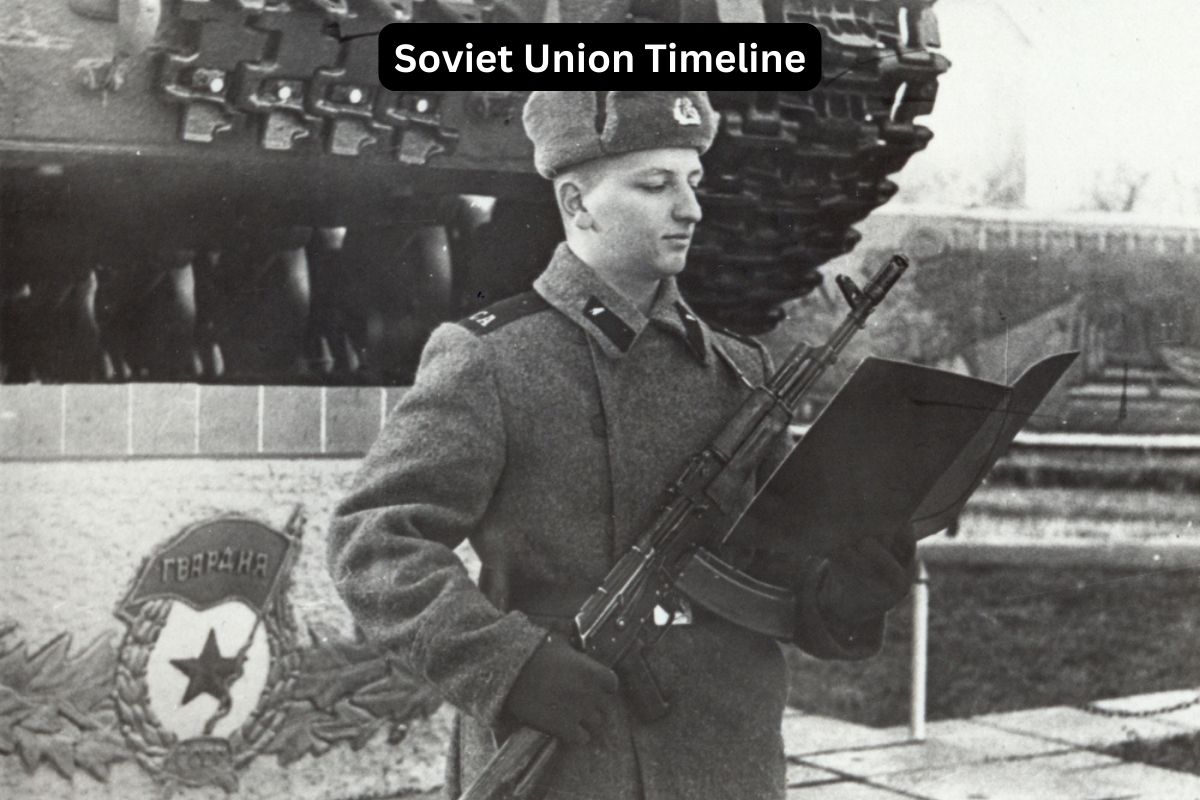The Soviet Union, born out of the fires of revolution in 1917, emerged as a global superpower that reshaped the course of history throughout the 20th century.
From the tumultuous years of Lenin’s Bolshevik Revolution to the collapse of the Iron Curtain and the dissolution of the USSR in 1991, its trajectory was marked by revolutionary fervor, industrialization drives, Cold War confrontations, and ultimately, internal decay.
This article provides a concise yet comprehensive overview of the key events and turning points in the rise and fall of the Soviet Union, tracing its journey from the dawn of communism to its eventual demise on the world stage.
| Year | Event |
|---|---|
| 1917 | February Revolution leads to the establishment of a provisional government in Russia. |
| 1917 | October Revolution brings the Bolsheviks to power, establishing the RSFSR. |
| 1918-1922 | Russian Civil War between the Bolsheviks (Red Army) and anti-Bolshevik (White Army) forces. |
| 1922 | Formation of the USSR comprising RSFSR, Ukrainian SSR, Belarusian SSR, and Transcaucasian SSR. |
| 1924 | Death of Lenin; Stalin rises to power. |
| 1928-1933 | First Five-Year Plan initiated for rapid industrialization. |
| 1939 | Molotov-Ribbentrop Pact with Nazi Germany. |
| 1941-1945 | Soviet Union fights in World War II, crucial in defeating Nazi Germany. |
| 1945 | Soviet occupation of Eastern Europe; establishment of communist governments. |
| 1949 | Soviet Union tests its first atomic bomb. |
| 1953 | Death of Stalin; Khrushchev emerges as leader. |
| 1956 | Khrushchev’s “Secret Speech” denounces Stalin’s policies; Hungarian Revolution. |
| 1961 | Construction of the Berlin Wall. |
| 1962 | Cuban Missile Crisis. |
| 1964 | Brezhnev becomes leader after Khrushchev. |
| 1979-1989 | Soviet intervention in Afghanistan. |
| 1985 | Gorbachev becomes leader, initiates reforms. |
| 1986 | Chernobyl nuclear disaster. |
| Late 1980s | Eastern European countries break away from Soviet influence. |
| 1991 | August Coup attempt fails; Gorbachev resigns; Soviet Union dissolves, CIS established. |
Timeline of the Soviet Union
1917: February Revolution leads to the establishment of a provisional government in Russia
The February Revolution of 1917 was a series of events in Russia that led to the overthrow of Tsar Nicholas II and the establishment of a provisional government.
It began with widespread discontent among the Russian populace due to factors such as food shortages, military failures in World War I, and dissatisfaction with the autocratic rule of the Tsar.
Also Read: Facts About Soviet Union
Mass protests and strikes erupted in Petrograd (now St. Petersburg) in February (March in the Gregorian calendar), eventually forcing Nicholas II to abdicate the throne.
The provisional government, led by liberals and moderate socialists, assumed power, marking the end of centuries of Romanov rule in Russia.
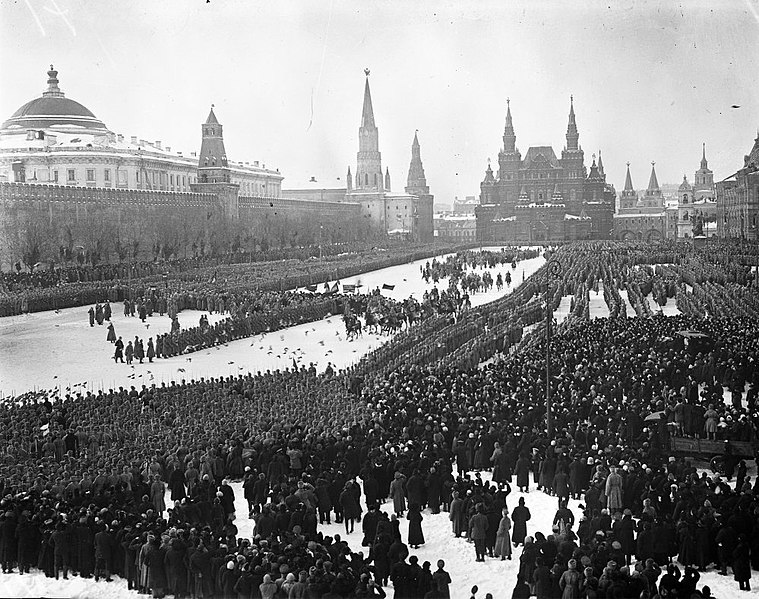
1917: October Revolution brings the Bolsheviks to power, establishing the RSFSR
The October Revolution, also known as the Bolshevik Revolution, occurred in Russia in October 1917 (November in the Gregorian calendar). It was led by the Bolshevik Party, headed by Vladimir Lenin, and aimed to overthrow the provisional government established after the February Revolution.
Also Read: Timeline of the Cold War
The Bolsheviks capitalized on widespread disillusionment with the provisional government’s handling of the war and social issues, promoting slogans such as “Peace, Land, and Bread” to gain support among the Russian population.
On October 25 (November 7), 1917, Bolshevik forces stormed the Winter Palace in Petrograd, seizing power from the provisional government. The Bolsheviks established the Russian Soviet Federative Socialist Republic (RSFSR), marking the beginning of communist rule in Russia.
1918-1922: Russian Civil War between the Bolsheviks (Red Army) and anti-Bolshevik (White Army) forces
The Russian Civil War was a multi-faceted conflict fought between various factions in Russia from 1918 to 1922.
The main contenders were:
- Bolshevik (Red) forces, representing the communist government
- Anti-Bolshevik (White) forces, comprising a diverse array of groups, including monarchists, liberals, nationalists, and foreign interventionists.
The war was characterized by brutal fighting, atrocities, and foreign intervention by countries such as Britain, France, Japan, and the United States, who supported the White forces in opposition to the Bolsheviks.
The Red Army, under the leadership of figures such as Leon Trotsky, ultimately emerged victorious, consolidating Bolshevik control over the territory of the former Russian Empire and laying the foundation for the establishment of the Soviet Union.
1922: Formation of the USSR comprising RSFSR, Ukrainian SSR, Belarusian SSR, and Transcaucasian SSR
The Union of Soviet Socialist Republics (USSR) was established on December 30, 1922. It was formed through the Treaty on the Creation of the USSR, which unified several socialist republics that had emerged following the collapse of the Russian Empire after the Bolshevik Revolution.
The founding republics included:
- The Russian Soviet Federative Socialist Republic (RSFSR)
- Ukrainian Soviet Socialist Republic (Ukrainian SSR)
- Belarusian Soviet Socialist Republic (Belarusian SSR)
- Transcaucasian Soviet Federative Socialist Republic (which later split into the Georgian, Armenian, and Azerbaijani SSRs).
The creation of the USSR marked the formal consolidation of Bolshevik power and the establishment of a federal socialist state in Eurasia.
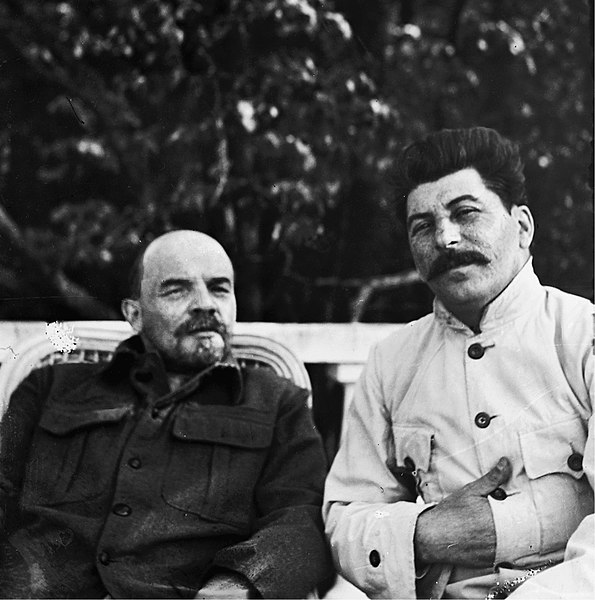
1924: Death of Lenin; Stalin rises to power
Vladimir Lenin, the leader of the Bolshevik Party and architect of the October Revolution, died on January 21, 1924, after a series of strokes. His death triggered a power struggle within the Communist Party leadership to succeed him.
Eventually, Joseph Stalin emerged as the dominant figure, consolidating his power through his position as General Secretary of the Communist Party of the Soviet Union.
Stalin initiated a campaign to strengthen his control over the party and government, ultimately leading to the establishment of a totalitarian regime characterized by centralization of power, state repression, and cult of personality.
1928-1933: First Five-Year Plan initiated for rapid industrialization
The First Five-Year Plan was a centralized economic development initiative launched by the Soviet government under Stalin’s leadership in 1928. It aimed to rapidly industrialize the Soviet economy and transform it from an agrarian society into an industrial powerhouse.
The plan focused on prioritizing heavy industry, such as steel, coal, and machinery production, at the expense of consumer goods. It involved massive state investment, forced collectivization of agriculture, and labor mobilization through the extensive use of labor camps (Gulags) and harsh measures to meet production targets.
Despite significant human costs and inefficiencies, the First Five-Year Plan laid the groundwork for the subsequent industrialization and modernization of the Soviet Union.
1939: Molotov-Ribbentrop Pact with Nazi Germany
The Molotov-Ribbentrop Pact, signed on August 23, 1939, was a non-aggression treaty between the Soviet Union and Nazi Germany.
Named after the foreign ministers of the respective countries, Vyacheslav Molotov and Joachim von Ribbentrop, the pact contained secret protocols that divided Eastern Europe into spheres of influence, effectively giving Stalin control over the Baltic states (Estonia, Latvia, and Lithuania) and parts of Poland.
The pact provided a period of relative stability for the Soviet Union, allowing Stalin to focus on internal consolidation and industrialization while Hitler pursued his expansionist goals in Western Europe.
1941-1945: Soviet Union fights in World War II, crucial in defeating Nazi Germany
The Soviet Union’s participation in World War II began on June 22, 1941, when Nazi Germany launched Operation Barbarossa, a massive invasion of the Soviet Union. The Eastern Front became the largest and bloodiest theater of the war, characterized by brutal fighting, atrocities, and immense human suffering.
Despite initial setbacks, the Soviet Union managed to halt the German advance at the Battle of Stalingrad in 1943 and launched a series of offensives that pushed the Germans back to Berlin.
The Soviet victory on the Eastern Front played a decisive role in the overall defeat of Nazi Germany in 1945, but at a tremendous cost of millions of lives lost and widespread devastation.

1945: Soviet occupation of Eastern Europe; establishment of communist governments
Following the end of World War II in Europe, Soviet forces occupied much of Eastern Europe, including countries such as Poland, East Germany, Czechoslovakia, Hungary, Romania, and Bulgaria. The Soviet Union sought to establish communist governments in these countries, which became known as the Eastern Bloc.
This period marked the beginning of the Cold War, as tensions between the Soviet Union and the Western Allies escalated over ideological differences and competing spheres of influence in Europe.
1949: Soviet Union tests its first atomic bomb
On August 29, 1949, the Soviet Union successfully tested its first atomic bomb, codenamed “RDS-1” or “First Lightning.”
The development of nuclear weapons by the Soviet Union signaled the beginning of the nuclear arms race between the United States and the Soviet Union during the Cold War.
The Soviet acquisition of nuclear capabilities contributed to the strategic balance of power and heightened tensions between the two superpowers, leading to an era of nuclear deterrence known as Mutually Assured Destruction (MAD).
1953: Death of Stalin; Khrushchev emerges as leader
The death of Joseph Stalin on March 5, 1953, marked the end of an era in Soviet leadership. Stalin’s death triggered a power struggle within the Communist Party, eventually leading to the emergence of Nikita Khrushchev as the new leader of the Soviet Union.
Khrushchev, who had previously served in various leadership positions within the party and government, including as First Secretary of the Communist Party of Ukraine, would go on to lead the Soviet Union through a period of significant political and social change.
1956: Khrushchev’s “Secret Speech” denounces Stalin’s policies; Hungarian Revolution
In February 1956, Nikita Khrushchev delivered a speech at the 20th Party Congress of the Communist Party of the Soviet Union, known as the “Secret Speech.”
In this speech, Khrushchev denounced the cult of personality surrounding Joseph Stalin and criticized his policies of repression and purges. The speech marked a significant turning point in Soviet history, leading to a period of de-Stalinization and reforms within the Communist Party and society.
Concurrently, in October 1956, Hungary witnessed a popular uprising against the Soviet-backed government led by Mátyás Rákosi. The Hungarian Revolution started as a student demonstration in Budapest but quickly escalated into a nationwide revolt against the authoritarian regime and Soviet influence.
The Soviet Union responded by sending in troops to crush the uprising, resulting in a violent suppression and the installation of a new, more compliant government.
Despite its ultimate failure, the Hungarian Revolution exposed the cracks in Soviet control over its satellite states in Eastern Europe and highlighted the limitations of Khrushchev’s policy of “peaceful coexistence.”
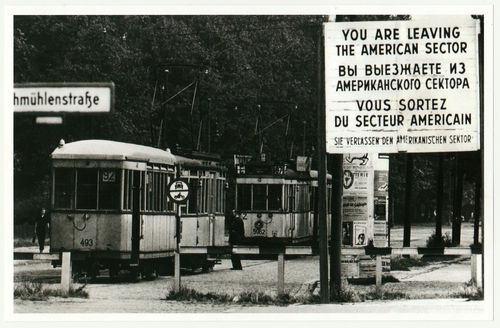
1961: Construction of the Berlin Wall
On August 13, 1961, East German authorities, with the support of the Soviet Union, began the construction of the Berlin Wall, a fortified barrier dividing East Berlin from West Berlin.
The wall was erected to stem the tide of East Germans fleeing to the West in search of political freedom and economic opportunities.
The construction of the Berlin Wall symbolized the division of Germany and Europe during the Cold War and became a potent symbol of the ideological and physical barrier between the communist East and the capitalist West.
1962: Cuban Missile Crisis
The Cuban Missile Crisis, occurring in October 1962, was a 13-day standoff between the United States and the Soviet Union over the presence of Soviet nuclear missiles in Cuba.
The crisis was precipitated by the discovery of Soviet ballistic missiles in Cuba, capable of striking targets in the United States. In response, President John F. Kennedy imposed a naval blockade on Cuba and demanded the removal of the missiles. Tensions escalated dangerously, bringing the world to the brink of nuclear war.
However, through intense diplomatic negotiations, known as the “thirteen days,” the crisis was peacefully resolved, with the Soviet Union agreeing to withdraw its missiles from Cuba in exchange for a pledge from the United States not to invade the island nation.
1964: Brezhnev becomes leader after Khrushchev
Following the ousting of Khrushchev in 1964, Leonid Brezhnev emerged as the new leader of the Soviet Union.
Brezhnev’s tenure as General Secretary of the Communist Party marked a period of stability and conservatism in Soviet politics, known as the Brezhnev Era or “Era of Stagnation.”
Under Brezhnev’s leadership, the Soviet Union pursued policies of détente with the West, focusing on arms control negotiations and easing tensions in the Cold War.
However, domestically, the Soviet economy stagnated, bureaucratic inefficiencies proliferated, and political repression persisted, leading to a decline in living standards and public morale.
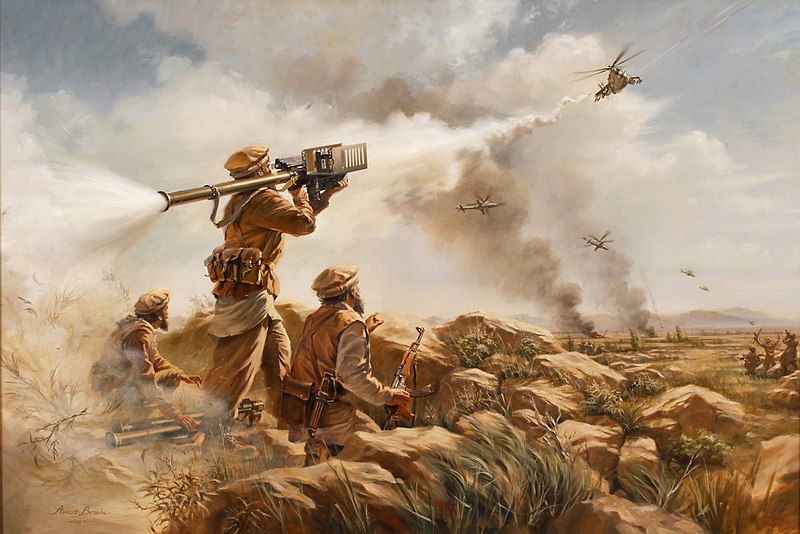
1979-1989: Soviet intervention in Afghanistan
In December 1979, the Soviet Union intervened militarily in Afghanistan, aiming to prop up the communist government of the People’s Democratic Party of Afghanistan (PDPA) against insurgents known as the mujahideen.
The Soviet intervention was prompted by concerns about instability in Afghanistan and the potential spread of Islamic fundamentalism to neighboring Soviet republics. The conflict quickly escalated into a protracted and costly war, with the mujahideen receiving support from the United States, Pakistan, and other countries.
The Soviet Union faced mounting casualties and international condemnation for its actions. After a decade-long occupation, the Soviet Union withdrew its troops from Afghanistan in 1989, leaving behind a war-torn country that descended into civil war and paved the way for the rise of the Taliban.
1985: Gorbachev becomes leader, initiates reforms
Mikhail Gorbachev assumed leadership of the Soviet Union in March 1985, following the death of Konstantin Chernenko. Gorbachev’s tenure marked a period of significant reform and restructuring within the Soviet Union.
His policies, known as glasnost (openness) and perestroika (restructuring), aimed to modernize and revitalize the Soviet economy and political system. Glasnost encouraged greater freedom of speech and openness in society, while perestroika sought to decentralize economic decision-making and introduce elements of market reforms.
Gorbachev’s reforms ushered in a period of unprecedented change and political dynamism in the Soviet Union, but also unleashed forces that ultimately contributed to the system’s collapse.
1986: Chernobyl nuclear disaster
On April 26, 1986, the Chernobyl Nuclear Power Plant in Ukraine suffered a catastrophic explosion during a safety test, releasing a massive amount of radioactive material into the atmosphere.
The Chernobyl disaster was the worst nuclear accident in history, causing widespread environmental contamination and health effects across Europe. The Soviet government initially attempted to conceal the extent of the disaster but eventually acknowledged the severity of the situation and launched a massive cleanup and containment effort.
The Chernobyl disaster had far-reaching consequences, including increased scrutiny of nuclear safety standards, public distrust of government institutions, and implications for the viability of nuclear energy as a power source.
Late 1980s: Eastern European countries break away from Soviet influence
The late 1980s witnessed a wave of revolutions and popular uprisings across Eastern Europe, leading to the collapse of communist regimes and the dismantling of the Soviet bloc.
Beginning with Poland’s Solidarity movement in the early 1980s, followed by mass protests in countries such as Hungary, East Germany, Czechoslovakia, and Romania, the Eastern European revolutions challenged Soviet control and authoritarian rule.
The revolutions culminated in the fall of the Berlin Wall in 1989, symbolizing the end of the Cold War division of Europe.
The events of 1989 ushered in a new era of democracy and independence for the former Soviet satellite states, fundamentally reshaping the geopolitical landscape of Europe.
1991: August Coup attempt fails; Gorbachev resigns; Soviet Union dissolves, CIS established
In December 1991, the Soviet Union officially dissolved, marking the end of over seven decades of communist rule and the Cold War era. The dissolution came about following a series of events, including the failed August Coup attempt against Mikhail Gorbachev’s government, economic stagnation, ethnic tensions, and the rise of nationalist movements within the Soviet republics.
On December 25, 1991, Gorbachev resigned as president of the Soviet Union, effectively ending its existence. The former Soviet republics declared independence and established the Commonwealth of Independent States (CIS) as a loose association to coordinate political and economic cooperation among the newly independent states.
The dissolution of the Soviet Union had profound implications for global politics, marking the end of bipolarity and the emergence of a unipolar world dominated by the United States.
